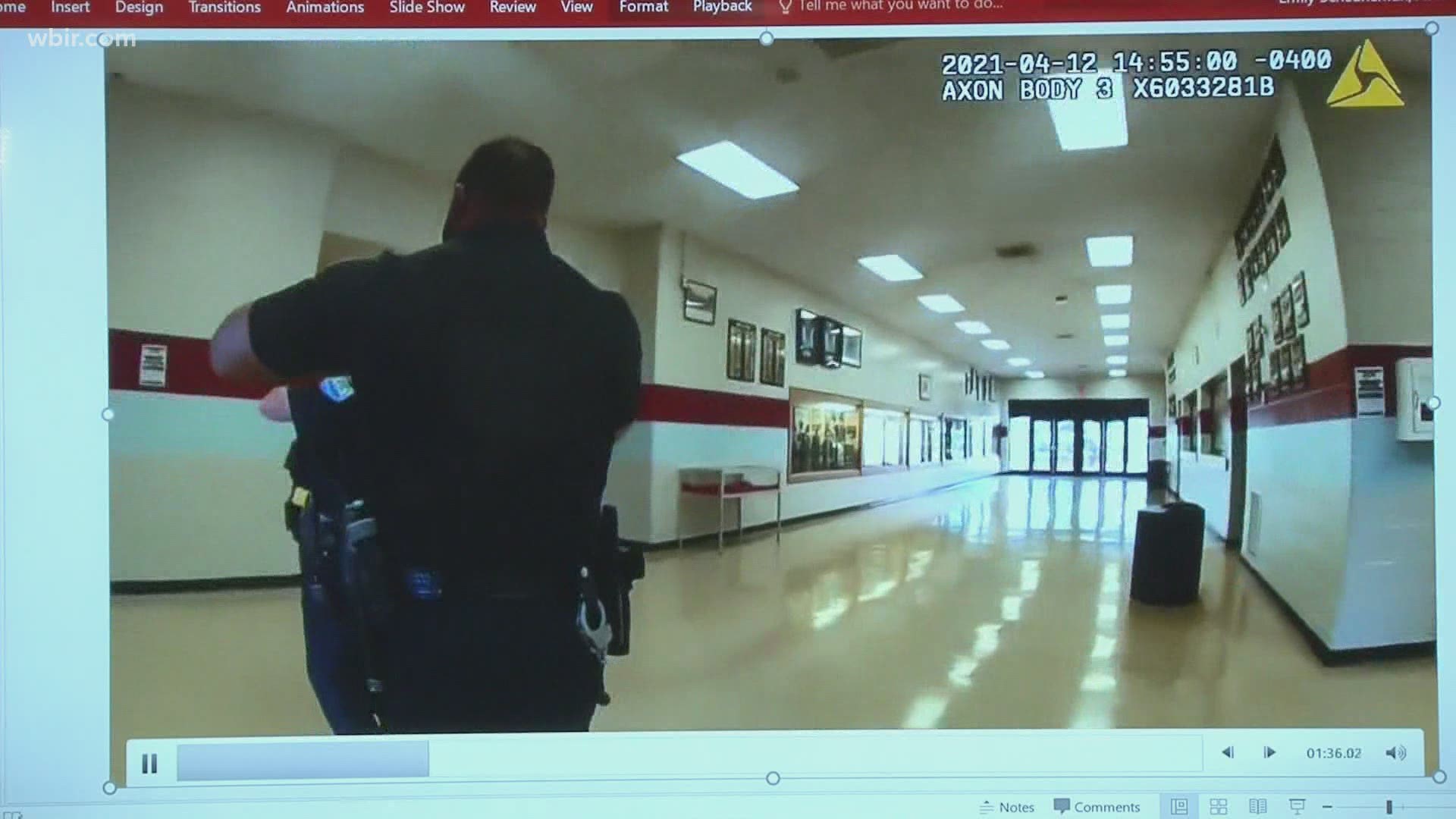KNOXVILLE, Tenn — At the beginning of April, all uniformed Knoxville Police officers were equipped with body cameras.
The project took months and cost taxpayers more than $4 million, but the recent deadly shooting at Austin-East High School shows the cameras aren't foolproof.
The District Attorney General said four officers were involved in the April 12 shooting, but only one body camera recorded the entire time.
Two others fell off and one didn't start working until after the shooting was over.
17-year-old Anthony Thompson Jr. died during that struggle with police. The four officers, including the school resource officer, found the student in a bathroom.
According to statements from the officers, Thompson fired his gun once.
Within seconds an officer fired two shots. The first hit the student in the upper chest, the second struck one of the officers in the leg.
The DA said the actions of the officers were justified.
Knoxville Police officers spent months preparing and training for the release of body-worn cameras April 1. In that time, a release from the department says officers received training from KPD Tech Services personnel before hitting the streets.
11 days later would mark the first major incident those cameras would capture.
"Having them is not good enough," said attorney Lance Baker.
Body camera video released from the shooting at Austin-East shows they're not always effective.
Only one out of the four responding officer's body cameras worked properly. The DA said thats because it was secured by a locking mechanism, the two that fell off were magnetic.
It has come with criticism and more questions from the community.
Baker said he faces issues with body camera footage often.
"In my experience over the last several years somewhere between 85-90% of the time we request a body camera, it's not that they don't exist or have fallen off… it's that they've malfunctioned and either an officer error and not turning it on or the battery dies."
In turn, it doesn't allow full transparency .
"Transparency does not end at purchasing the body cameras, it doesn't end at purchase," said Baker. "Transparency ends when we know the body cameras are functional, operable, officers know how to use them and then released to the public and quickly."
KPD is conducting an internal investigation.
Baker hopes it will shed light on what went wrong and prevent similar situations from happening
"You see that the police officers have to understand how these things operate, when they need to be charged, how you need to place them on their uniform and where," he said.
KPD said the body-worn cameras automatically record anytime an officer opens his or her door or if they are close to another officer whose body camera is activated.

